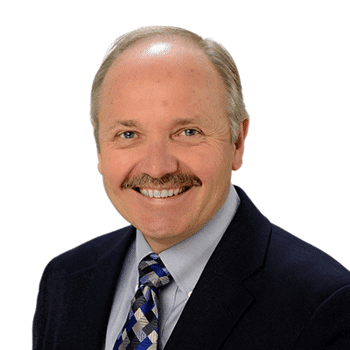Is Alcohol a Stimulant or Depressant?
Written by The Recovery Village
& Medically Reviewed by Dr. Kevin Wandler, MD
Medically Reviewed
Last updated: 02/01/2025
Alcohol is one of the most commonly consumed substances worldwide. It is often associated with relaxation, social gatherings and celebrations. However, alcohol’s impact on the human body and mind is far more complex than many people realize. A key question that arises for those interested in understanding alcohol’s effects is: Is alcohol a stimulant or a depressant? While alcohol does produce some stimulating effects in the short term, its overall impact classifies it firmly as a depressant. Understanding the reasons for this classification — and what it means for mental health and well-being — can help individuals make more informed decisions regarding their alcohol use.
Below, we explore the ways alcohol affects the central nervous system (CNS), how stimulants and depressants differ, and the potential risks of alcohol use, including mental health disorders. We also discuss the danger levels of stimulants versus depressants and where to seek help if you or a loved one is struggling with substance use.
Is Alcohol A Stimulant or Depressant?
Because alcohol can initially make you feel more energetic or upbeat, many people mistake it for a stimulant. However, scientific and medical communities consistently classify alcohol as a depressant. This means it slows down the functions of the central nervous system, affecting your ability to think, move, speak and perceive the world around you.
Alcohol As a Depressant
Alcohol’s depressive properties arise from how it interacts with brain chemistry. When you consume alcohol, it enhances the effects of gamma-aminobutyric acid (GABA), a neurotransmitter responsible for slowing neural activity. This results in drowsiness, relaxation and sedation. In addition, alcohol reduces the effects of excitatory neurotransmitters like glutamate, further decreasing overall brain activity. These actions contribute to the depressant effects most people experience, including:
- Slowed reaction times
- Impaired judgment
- Reduced coordination
- Lowered inhibitions
Consuming larger amounts of alcohol compounds these effects, potentially leading to confusion, difficulty walking, and, in severe cases, respiratory depression or unconsciousness.
What Are Other Depressants?
Alcohol is not the only substance classified as a depressant. A variety of medications and illicit drugs also slow down the central nervous system, some of which are prescribed for legitimate medical reasons while others are used recreationally. Examples of common depressants include:
- Benzodiazepines (e.g., Valium, Xanax): Often prescribed to treat anxiety and panic disorders, these medications calm the mind by increasing GABA activity.
- Barbiturates (e.g., phenobarbital): Historically used for anxiety, insomnia and seizure disorders, but less common today due to high overdose risk.
- Opioids (e.g., heroin, oxycodone, morphine): Primarily used for pain management but also depress the respiratory system and can be highly addictive.
- Sleeping Medications (e.g., zolpidem): Intended to help people fall or stay asleep by slowing brain activity.
Though these substances vary in their mechanisms and effects, they share a common trait: depressing or slowing brain and body functions, potentially leading to sedation, reduced anxiety, or, in high doses, respiratory failure.
Why Is Alcohol Not Considered a Stimulant?
If a person feels more sociable or energetic after a couple of drinks, they might argue that alcohol acts as a stimulant. While it’s true that alcohol can cause short-term bursts of euphoria or energy, these effects are limited compared to its overarching depressant qualities. Understanding why alcohol is not considered a stimulant requires an examination of how stimulants work versus how alcohol works in the body.
What Is a Stimulant?
A stimulant is a substance that increases activity in the brain and nervous system. It does so by boosting certain neurotransmitters, such as dopamine and norepinephrine. Common stimulants include:
- Caffeine: Found in coffee, tea and energy drinks; raises alertness and energy levels.
- Nicotine: Found in tobacco products; increases heart rate and releases adrenaline.
- Amphetamines (e.g., Adderall): Prescribed for attention deficit hyperactivity disorder (ADHD) and narcolepsy.
- Cocaine: An illegal stimulant that quickly increases dopamine in the brain, producing a rush of energy and euphoria.
Stimulants typically enhance wakefulness, attention and alertness and can increase heart rate and blood pressure.
What Stimulant Effects Does Alcohol Have?
Although alcohol primarily functions as a depressant, it can briefly elevate mood or create a sense of excitement, particularly in the early stages of drinking. This is partly because alcohol lowers inhibitions. By reducing activity in the parts of the brain responsible for self-control and decision-making, you might feel more confident or sociable. Additionally, mild releases of dopamine — the so-called “feel-good” neurotransmitter — can provide a temporary sense of pleasure or reward.
However, as you continue to drink, these stimulant-like effects fade, and the depressant properties become more prominent. The net effect is slower reaction times, impaired judgment and motor control. In other words, any stimulatory sensations produced by alcohol are temporary and overshadowed by its primary function as a CNS depressant.
Can Alcohol Lead to Mental Health Disorders?
Beyond the immediate physical and neurological effects, alcohol’s depressant nature and its impact on neurotransmitters can contribute to the onset or worsening of mental health disorders. Chronic or heavy use can disrupt the delicate balance of brain chemistry, leading to various psychological issues.
Depression
Alcohol can exacerbate or trigger depressive symptoms. While drinking may temporarily seem to relieve stress or negative feelings, the aftereffects often deepen sadness and feelings of hopelessness. Over time, heavy alcohol use can deplete the brain of serotonin and other neurotransmitters responsible for stabilizing mood, increasing vulnerability to clinical depression.
Anxiety
Similarly, although alcohol may reduce anxiety in the short term, long-term and excessive use can lead to higher anxiety levels. Once the sedative effects wear off, the body and brain may experience rebound anxiety. This can create a cycle in which individuals drink more to cope with increased anxiety, perpetuating dependence.
Substance Use Disorders
The depressant effects of alcohol can lead to physical and psychological dependence. As tolerance develops, people often need larger quantities to achieve the same feelings of relaxation or euphoria. Over time, this can result in an alcohol use disorder (AUD). Co-occurring disorders (or dual diagnosis) can arise when someone has both a mental health disorder and a substance use disorder at the same time, complicating treatment and recovery.
Psychosis
Although less common, high levels of alcohol consumption can contribute to episodes of psychosis, such as hallucinations or delusions, particularly during withdrawal. Alcohol-related psychosis differs from primary psychotic disorders like schizophrenia but still poses a serious risk to mental health and requires medical intervention.
Cognitive Impairment
Chronic alcohol use can damage brain cells, leading to memory issues, difficulty with planning and decision-making, and reduced attention span. Over time, these cognitive impairments can become long-lasting or even permanent. Conditions such as Wernicke–Korsakoff syndrome (a severe memory disorder) illustrate how deeply alcohol can affect brain function.
Are Stimulants More Dangerous Than Depressants?
When it comes to potential harm, it’s challenging to make a blanket statement that one category — stimulants versus depressants — is universally more dangerous. Both types of substances carry risks, especially when used improperly or mixed with other drugs:
- Stimulants can cause dangerously high heart rates, elevated blood pressure and hyperthermia. Overdoses may lead to seizures, stroke, cardiac arrest or death. Chronic stimulant misuse can result in severe mood and sleep disturbances, paranoia and addiction.
- Depressants carry the risk of respiratory depression, especially when combined with other CNS depressants (e.g., opioids or benzodiazepines). Overdosing on depressants can slow breathing to a life-threatening level. Dependence and withdrawal symptoms can be severe (e.g., seizures, delirium tremens).
Ultimately, the biggest danger often lies in using these substances without medical supervision and in combinations that amplify each other’s harmful effects. For instance, mixing stimulants and depressants can create a “push-pull” effect on the body, leading to severe cardiovascular and respiratory risks. Whether a substance is a stimulant or depressant, misuse can result in addiction, overdose or severe medical complications.
Help With Stopping Stimulants or Depressants
If you suspect that your use of stimulants, depressants or alcohol is causing harm to your health or relationships, it’s crucial to seek professional help. Treatment options vary based on the substance and severity of use, but they often include:
- Medical Detox: Many depressants, including alcohol and benzodiazepines, pose serious withdrawal risks. Medical detox involves round-the-clock medical supervision and, in some cases, medication to help manage withdrawal symptoms safely.
- Inpatient/Residential Treatment: Living at a treatment facility offers structured care, group therapy, individual counseling and other resources to build a strong foundation for recovery.
- Outpatient Programs: These allow you to receive therapy and medical support while living at home. Intensive outpatient programs (IOPs) and partial hospitalization programs (PHPs) can also provide structured treatment without full-time residency.
- Behavioral Therapies: Therapies like cognitive behavioral therapy (CBT), dialectical behavior therapy (DBT) and motivational interviewing help individuals develop coping strategies, manage triggers and reduce the risk of relapse.
- Support Groups: Participating in 12-step groups (e.g., Alcoholics Anonymous, Narcotics Anonymous) or other peer support programs can provide a sense of community and shared experience, fostering long-term recovery.
- Medication-Assisted Treatment (MAT): Certain addictions may respond well to medications that reduce cravings or block the effects of drugs. For example, medications like naltrexone can help with alcohol cravings, and buprenorphine can manage opioid dependence.
Recovery is possible with the right combination of therapeutic interventions, community support and a willingness to change. Seeking treatment at a reputable facility can help break cycles of abuse and address co-occurring mental health disorders.
Despite the initial burst of energy or sociability you might feel after a drink, alcohol remains a central nervous system depressant that can have significant effects on physical and mental health. Recognizing alcohol as a depressant clarifies why it slows the body’s processes, impairs judgment and coordination, and leads to potentially severe health outcomes when misused. While stimulants and depressants have different mechanisms of action, both pose considerable risks if misused or combined.
If you find that you or someone you care about is struggling with alcohol or other depressants — or stimulants, for that matter — help is available. Professional treatment centers, healthcare providers and support groups can help guide you through the process of withdrawal, recovery and a healthier life free from the cycle of substance use disorders. The first step is understanding the nature of alcohol, acknowledging its dangers and seeking the right support to ensure a safe path forward.
Professional Alcohol Addiction Treatment
Alcohol addiction can be difficult and potentially dangerous to recover from on your own. Severe alcohol withdrawal can be deadly, so heavy alcohol users should not attempt to wean off alcohol without the help of a professional medical detox facility. Alcohol addiction treatment will begin with a detox period that focuses on managing any uncomfortable or severe withdrawal symptoms that arise. After detox ends, patients begin a rehab program that teaches them how to cope without alcohol and maintain sobriety.
Detox and rehab can take place in inpatient or outpatient settings. Outpatient treatment is best for mild alcohol addictions, and it allows patients to attend doctor and therapy visits while still living at home. Inpatient treatment is best for moderate to severe alcohol addictions or people who have relapsed. Inpatient treatment involves living on-site at the detox or rehab facility, an approach that keeps patients in a healing environment and allows for better monitoring and treatment.
The Recovery Village Cherry Hill at Cooper provides a full continuum of care, from medical detox and inpatient rehab to aftercare. We are here to help you and those you love recover from addiction and begin a healthier, alcohol-free future. Contact us to learn more about alcohol addiction treatment programs that can work well for your needs in recovery.
Authorship



